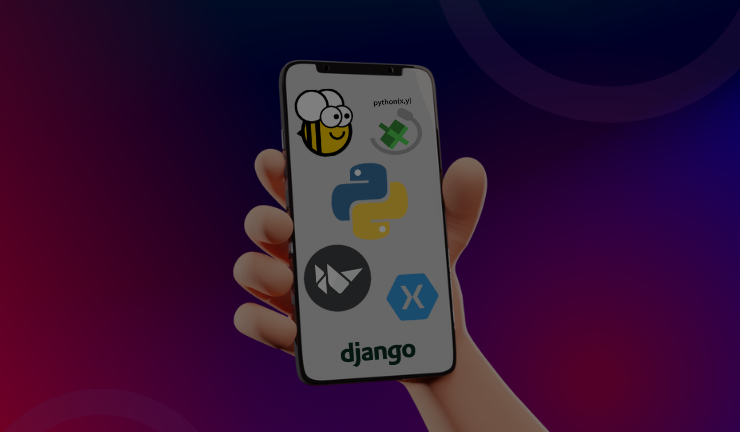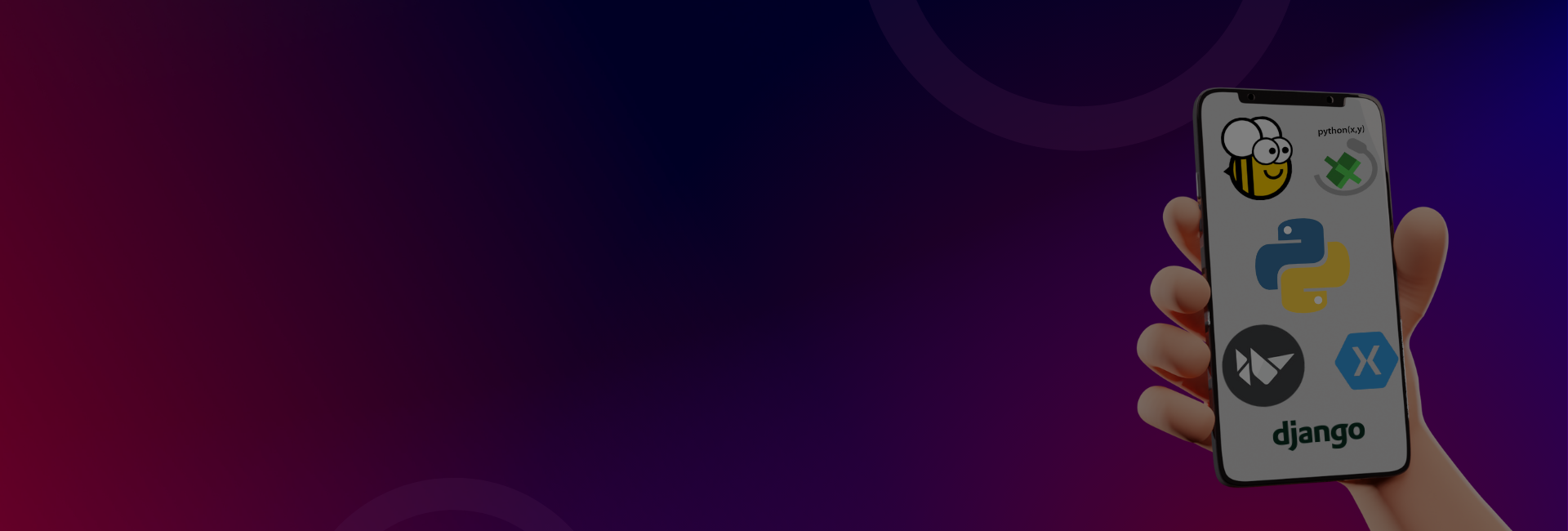Python’s popularity extends beyond software development! Its readability and vast ecosystem of libraries make it a powerful choice for building mobile applications as well. However, unlike native languages like Java or Kotlin, Python code can’t run directly on mobile devices.
Why Python for mobile development?
Here are some reasons why you might consider using Python for mobile development:
Faster Development:
Python’s clear syntax and focus on readability can speed up the development process compared to some other languages. This can be especially beneficial for prototyping or projects with tight deadlines
Cross-Platform Potential:
Frameworks like Kivy and BeeWare allow you to write Python code that can be used to create apps for multiple platforms (Android, iOS, etc.) with a single codebase. This can save time and resources compared to developing separate native apps for each platform.
Large Talent Pool:
Python boasts a vast and active community of developers. This can be helpful for finding talent or troubleshooting issues during development.
Data Science Integration:
If your mobile app heavily relies on data analysis or machine learning, Python’s robust data science ecosystem integrates seamlessly, allowing you to leverage powerful libraries for tasks within your mobile app.
Here are some key statistics that showcase its strength:
TIOBE Index (July 2024): Python currently holds the #1 spot according to the TIOBE Index, a popular ranking system for programming languages.
Stack Overflow Developer Survey (2024): Consistently ranks in the top 5 most used and loved Backend languages by developers on Stack Overflow.
PYPL Popularity List: Consistently ranks among the top languages people are learning worldwide.
Popularity of Python Frameworks:
Quantifying the exact usage of frameworks is challenging, but here are some insights:
Download Statistics: Services like PyPI (Python Package Index) provide download statistics. Frameworks like Django and FastAPI consistently see millions of downloads per month.
Web Traffic Analysis: Tools like Similarweb can estimate website traffic for framework documentation or tutorials. High traffic indicates a large active user base.
Job Market Trends: Job postings mentioning specific frameworks can indicate their demand within the industry.
Here’s a look at Top 8 Python Frameworks:
1. Kivy
Key Features: Open-source framework, focuses on cross-platform development (Android, iOS, Windows, macOS).
Use Case: Ideal for building visually appealing apps with a custom user interface (UI) across various platforms.
2. BeeWare
Key Features: Open-source, cross-platform framework with a focus on native-looking UIs.
Use Case: Well-suited for creating apps with a high degree of native UI customization for different platforms.
3. chaquo.com
Key Features: Open-source framework specifically designed for Android development using Python (Kivy is recommended for the UI).
Use Case: Targetting Android development with Python for the application logic.
4. Pyjnius
Key Features: Open-source library for calling Java APIs from Python, enables interaction with existing Android Java libraries.
Use Case: Integrate Python logic with existing Java codebases in Android apps.
5. Buildozer
Key Features: Open-source tool that packages Python apps into distributable formats for Android and iOS.
Use Case: Simplifies the process of packaging and distributing Python mobile apps.
6. Python(xy)
Key Features: Open-source framework allowing Python code to be compiled into native code for iOS and Android.
Use Case: Enables creation of mobile apps with potentially better performance than interpreted code.
7. Slipstream
Key Features: Commercial framework for cross-platform development using Python. Offers a visual development environment.
Use Case: Streamlines mobile app development with a visual UI builder and cross-platform compatibility.
8. Xamarin
Key Features: Not a pure Python framework, but allows embedding Python code within Xamarin.Forms for cross-platform mobile apps (C# is the primary language).
Use Case: Integrate Python functionalities into mobile apps built with Xamarin.Forms.
Popular Mobile Apps Built with Python
1. Instagram
Tech Stack:
Backend: Python (Django)
Frontend: React Native (JavaScript)
Database: PostgreSQL
Caching: Memcached
Other Tools: Redis, NGINX
2. Spotify
Tech Stack:
Backend: Python
Frontend: HTML5, JavaScript, React
Database: PostgreSQL, Cassandra
Caching: Memcached, Redis
Other Tools: Kafka, Hadoop
3. Dropbox
Tech Stack:
Backend: Python
Frontend: JavaScript (React)
Database: MySQL
Caching: Redis
Other Tools: NGINX, HAProxy
4. Reddit
Tech Stack:
Backend: Python (Pylons)
Frontend: JavaScript (React)
Database: PostgreSQL
Caching: Memcached
Other Tools: Cassandra, RabbitMQ
5. Pinterest
Tech Stack:
Backend: Python (Django)
Frontend: JavaScript (React)
Database: MySQL
Caching: Redis
Other Tools: NGINX, Kafka
Python Framework FAQs
What is a Python framework?
A Python framework is a pre-written collection of tools that simplifies application development. Imagine it like a pre-built toolbox for programmers. These tools handle common tasks like routing web requests, connecting to databases, and building user interfaces. This frees developers to focus on the unique logic of their application, saving time and effort. Different frameworks cater to various needs, like web development, data science, or desktop applications.
Q. Which Python framework is best for mobile app development?
Popular options like Django and Flask are excellent for web development, but not ideal for native mobile apps. For true mobile apps, consider frameworks like Kivy or BeeWare. These allow you to write Python code that can be compiled into apps for Android, iOS, or other platforms. While they might not achieve the exact look and feel of native apps, they offer a way to build cross-platform mobile apps with Python.
Q. Which is the most popular Python framework for mobile app development?
Frameworks like Kivy and BeeWare enable building cross-platform apps, but they don’t dominate the mobile space. The majority of mobile app development uses frameworks built for specific platforms (Swift/Xcode for iOS, Kotlin/Android Studio for Android) or cross-platform frameworks like React Native (JavaScript). These frameworks have much larger communities and resources compared to Python’s mobile options.
Q. Which types of Python frameworks are used for mobile app development?
When it comes to mobile app development with Python, the focus shifts to cross-platform frameworks rather than general-purpose ones. These frameworks, like Kivy and BeeWare, allow you to write Python code that can be compiled into apps for various platforms (Android, iOS, etc.). They offer advantages like faster development and a single codebase, but may not achieve the fully native look and feel of apps built with platform-specific tools. While not the most popular option overall, they provide a way to leverage Python’s strengths for cross-platform mobile app development.


